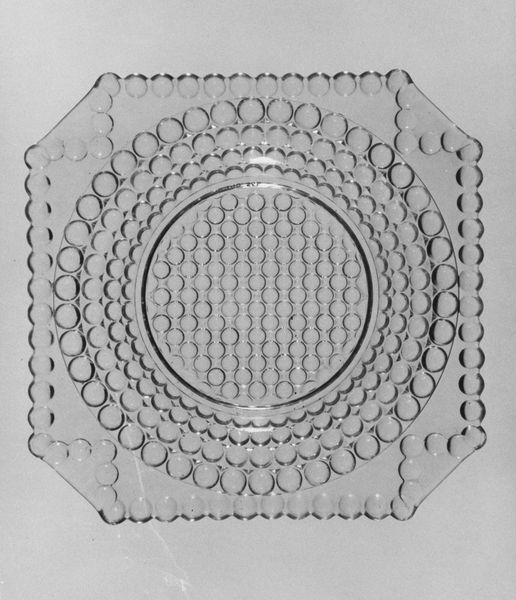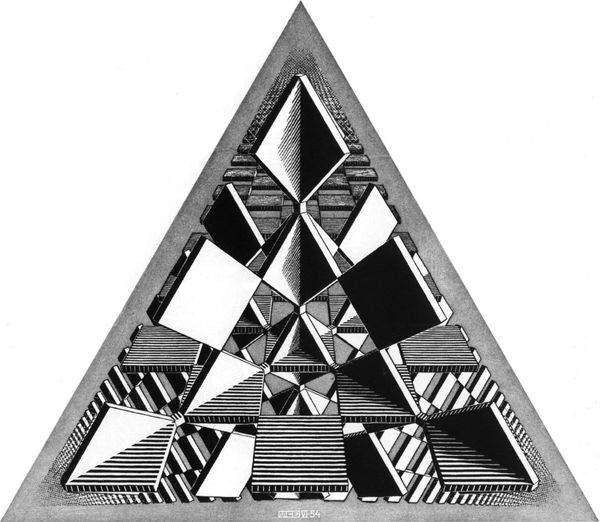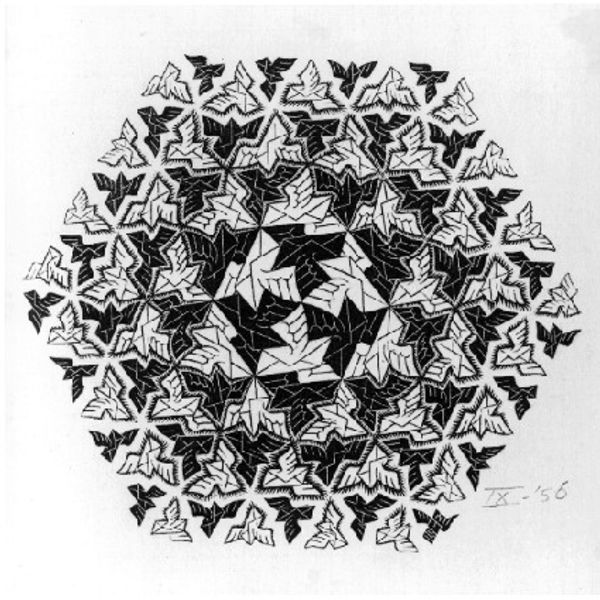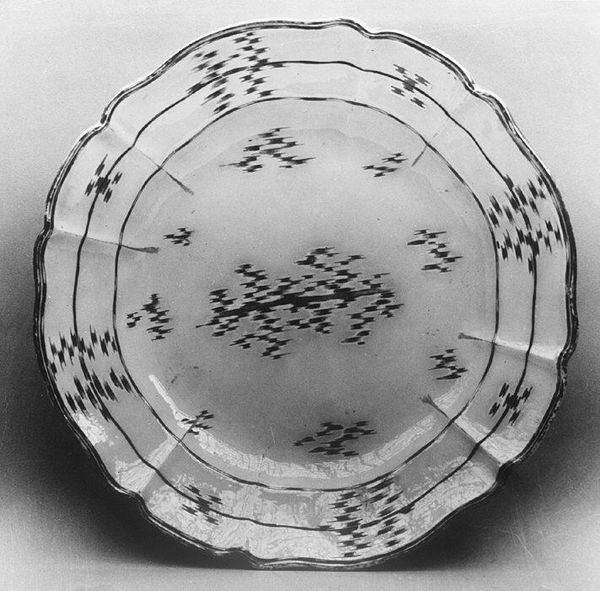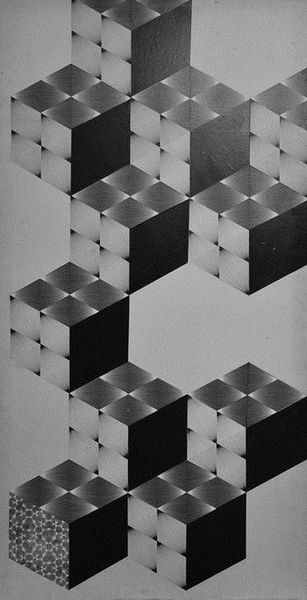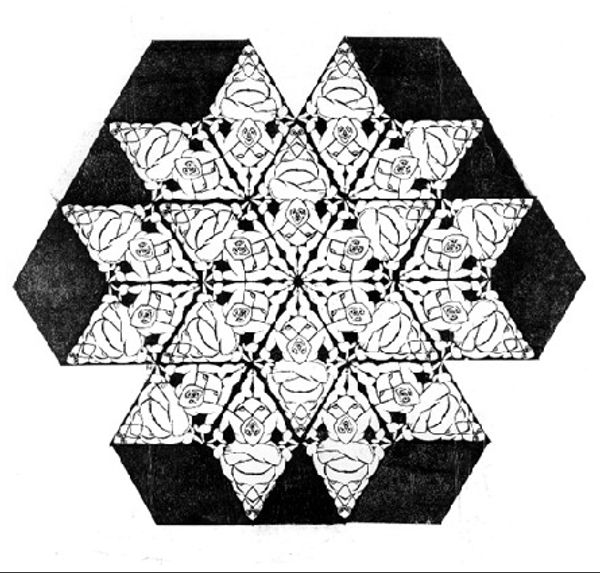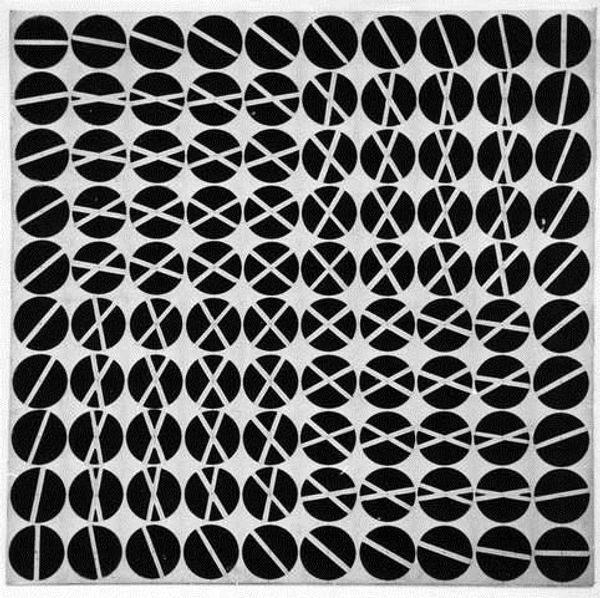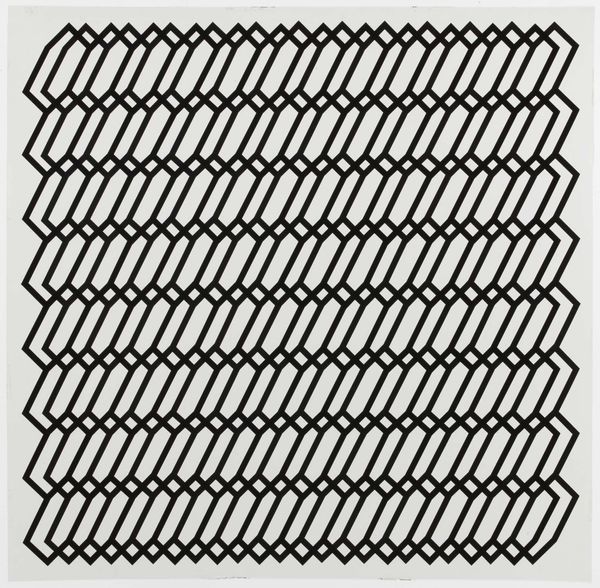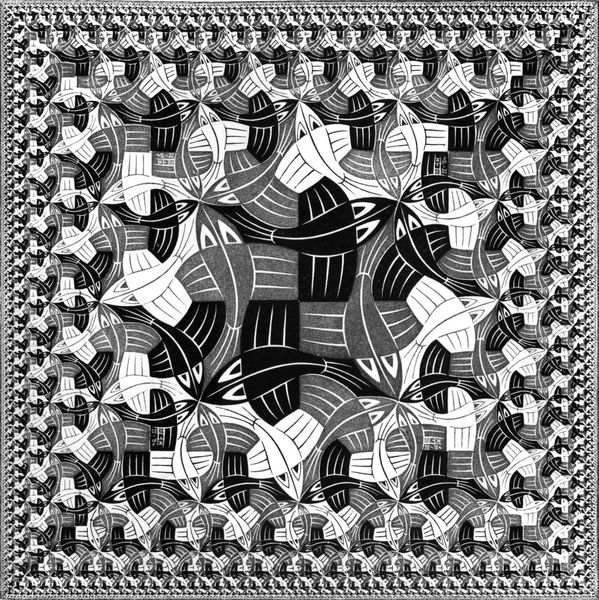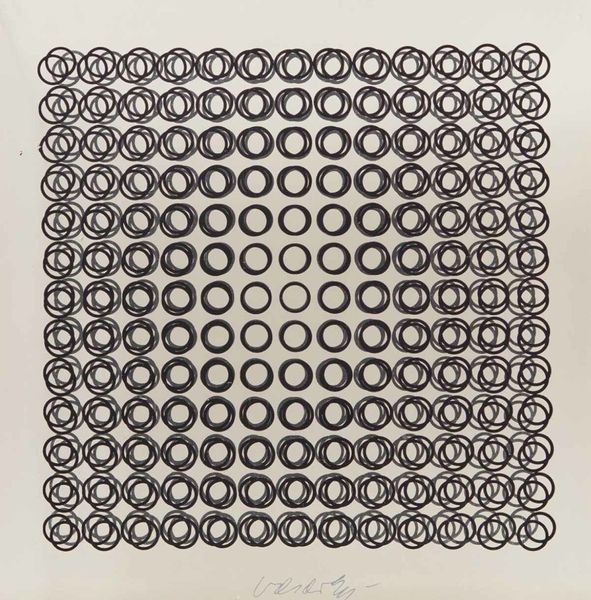
drawing, graphite
#
drawing
#
kinetic-art
#
op-art
#
geometric pattern
#
3d shape
#
geometric
#
abstraction
#
graphite
#
pattern repetition
#
modernism
Copyright: M.C. Escher,Fair Use
Curator: Welcome! We're standing before M.C. Escher's "Cube with Magic Ribbons," a graphite drawing from 1957. What's your immediate take on this, Editor? Editor: My gut reaction? Disorientation, but in a good way! It's like my brain is trying to untangle a knot that isn't really there. And those ribbons…they feel strangely organic against the hard geometry of the cube. Curator: Precisely. Escher's brilliance lies in playing with our perception. Consider the medium, graphite on paper. It’s deceptively simple for such a complex visual puzzle. The process requires meticulous planning, challenging our typical views about labor and abstraction. Editor: It does make you think about how long this took to create by hand, no computer trickery here. And the use of shading –it’s masterful in creating the illusion of depth. But what IS going on with those ribbons? Curator: Ah, the ribbons! Escher constructs this cube but violates its perceived limits. These aren’t static forms. The patterns invite close examination of negative and positive space— pushing op-art’s explorations with lines, shapes, and visual trickery. He repeats elements to build the whole. Editor: They remind me a bit of snakes, weaving in and out of impossible spaces. It almost feels alive, in a way that a mathematical drawing shouldn't. Curator: It speaks to how he pushes against our expectations for drawings of geometric objects, exploring an array of industrial materials that might comprise them. Editor: It almost feels playful, like Escher’s laughing at us as we try to figure it out. Maybe it’s about finding magic in the mundane. Curator: In many ways, this single work brings forward multiple perspectives about mathematical operations as both natural and artificial. Editor: I came away wondering about my own relationship to things made by machines and human beings, both.
Comments
No comments
Be the first to comment and join the conversation on the ultimate creative platform.


